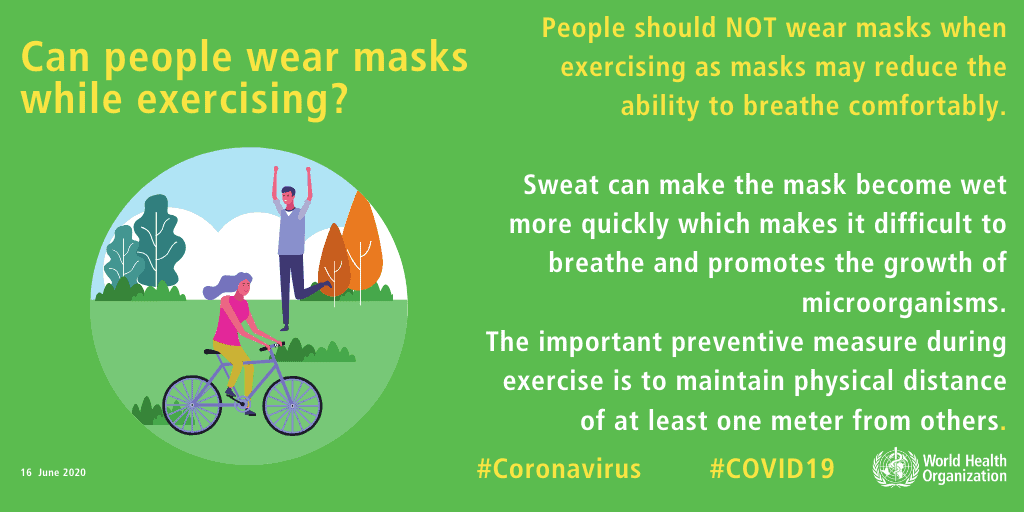Wearing Bluetooth earbuds and facing a mobile screen Gowri Gnanasambanthan strains to hold a forearm plank. Her instructor joins in on a WhatsApp video call, teaching her the right way of doing it.
Ever since the lockdown in March, Gowri’s apartment terrace has become her gym. “I can’t work out alone. I have a WhatsApp group with a close circle of friends where we share videos, take on challenges and work out together. My husband is my workout partner. This motivates me a lot,” she says. Gowri has not let stress and boredom inflicted by the lockdown disrupt her fitness routine.
Under Unlock 3.0 guidelines, the Union Ministry of Home Affairs has allowed gyms and yoga centres to open. Although good news for fitness freaks, many are still unconvinced about the safety of hitting the gym, as the COVID-19 wave has not subsided in the city.
However, staying away from gyms doesn’t mean you cannot follow your workout routine at home. Here are some tips:
Where and how
- If you are starting a new workout routine, make sure to take it slow. Work on your posture and form before delving into High Intensity and Interval Training (HIIT). Listen to your body and see how it reacts.
- Your food intake should be two hours prior to the workout. Trainers suggest eating a banana or peanut butter half-an-hour before the workout to induce energy. After the session, have protein-rich food within 45 minutes.
- Home clothes are not appropriate for any kind of physical activity. Invest in activewear or wear something comfortable and easy to move around in. T-shirts, shorts and yoga pants are popular choices.
- Warm-ups before and after workout sessions are important. Stretch and loosen your muscles to prevent injuries and to get into the rhythm of the workout. Stay hydrated before, during and after the workout.
- Focus on strength training. Exercises such as squats, lunges, jumping jacks and push-ups require no equipment. It helps in maintaining joint flexibility and increases muscle mass. Do it for 15-20 minutes every day. Workout intensity differs from person to person and depends on existing physical conditions. Take help of a physical therapist or fitness expert for a customised training program.
- Any object at home can be used to do simple weight lifting exercises. However, the safest are water bottles and backpacks (with books).
- You may use the terrace area to workout in the fresh air but make sure you are wearing proper shoes as concrete floors can cause injuries to your knees and feet. Also, ensure social distancing.
- Walking up and down the stairs (while maintaining social distancing) is the best cardio workout.
- The following workouts need no equipment and can be done indoors: yoga, dancing, aerobics, Pilates and Zumba.
- To achieve a fit mind and body your workout needs to complement your diet. Ensure to include all essential nutrients such as proteins, fats, vitamins, carbohydrates and minerals in your daily diet.
- Beat workout blues by sharing the experience with friends and family, motivating each other and having fun through the process.
- With access to a plethora of workout tutorials, YouTube is a great medium to get the initial push for a workout regimen. But it is not advisable for the beginners to rely on such videos without professional guidance. Doing simple squats can prove harmful in the long-run if not done with the right form and posture.
For training and guidance online, you can contact: Prasanth R, Fitness Expert/Trainer https://www.instagram.com/prazo_fit P Vigneshkumar, Fitness Expert/Trainer https://www.instagram.com/gladiatorvicky/ Email : vigneshboxer40@gmail.com Jayachandran Tamilarasan - Fitness Trainer and founder The crew Patanjali Yoga centre offers free online yoga twice a day. Like their page Patanjali Yoga Bengaluru on Facebook for live sessions.
“Consistency matters the most. You need to workout every day at a time that suits you; get into a routine. It is alright to take a short break from exercise when you have the confidence of resuming it.”
— Prasanth R, a fitness expert
Advice for runners
This is a particularly difficult time for runners. Those in containment zones, or who are forced to stay indoors, can switch to high intensity workouts at home to maintain muscle strength. Those living in non-containment zones can run in early mornings or late at night, as the streets would be less crowded.
| The World Health Organisation advises adults over 18 years to engage in moderate-intense physical activity for at least 150 minutes throughout the week to stay active during the pandemic; for children between 5 and 17 years, it is 60 mins a week. |
Kokila Basanthi, an IT professional and a regular runner has reduced her running time to three to four days a week now. As for safety precautions, she says, “I wear a surgical mask as it is easier to breathe (through it) as opposed to an N95 mask, which I was using earlier. I also carry a sanitiser. I do not remove my mask or drink water when I am outdoors.” Do not forget to wash your hands before and after the run.
There is, however, some confusion over whether one should wear a mask or not while exercising. According to the World Health Organisation, a person should not wear masks during heavy exercise or intense physical activity since it may interfere with the ability to breathe normally.

Arun R, a general physician practising in the city, said, “As it is advisable to not wear a mask while doing any strenuous physical activity, runners should choose less crowded spaces. However, if they live in containment zones, the best thing to do is to wear a one-ply surgical mask. And in such cases, they should avoid high-intensity workouts as he/she is already working harder to get enough air to lungs with the mask on.”
(With inputs from fitness experts — Prasanth R, Jayachandran Tamilarasan and trainees — Gowri Gnanasambanthan and Kokila Basanthi)